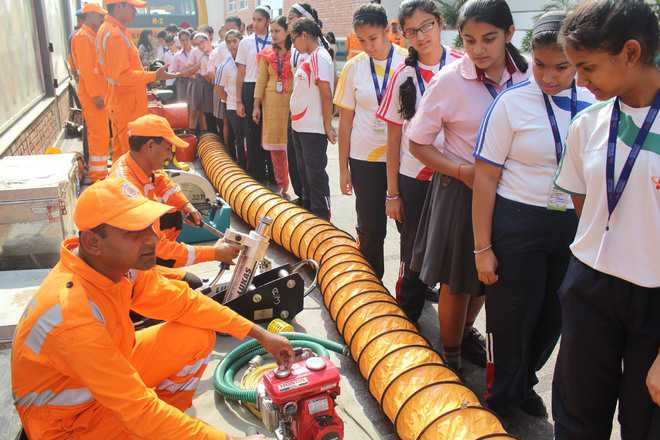Schools are critical infrastructure entrusted with the responsibility of creating citizens of tomorrow. A safe and secure environment is a prerequisite for effective teaching and learning. Thus ensuring safety of children, teachers and staff members during disasters. In the light of recent tragedies Involving school children, like the Kumbakonam fire tragedy, Dabwall fire incident and earthquakes around the world where school children were affected due to unsafe school buildings. It becomes of utmost importance that safety of children is given due consideration, making schools safe also serves the purpose of their dual use as evacuation centers during emergencies. Building safe schools should be a priority for architects, engineers, policy makers, administrators and emergency response planners. Among all public facilities, children in schools are the most vulnerable during disasters. A large number of schools operate in congested urban centers and are exposed to various hazards. School safety includes within its ambit structural safety of the buildings per se and non-structural measures like awareness generation, ensuring communication, school preparedness plans, capacity building of students and teachers, rehearsals and mock drills etc. Building safe schools will not only ensure safety of children in disasters, but will also promote faster rehabilitation post disaster. Here are the preventive steps students can take to help to save an accident victim.
- A well-chalked out plan that will become into force during an internal or external disaster
- Active involvement with public service agencies like ambulance, police and fire departments
- Training imparted to school staff to better manage the crisis without panicking
- Circulation of pamphlets about disaster management in every classroom
- Identifying the extent of damage caused by the crisis as a data point for the head of the institution to initiate corrective measures
- Constantly being watchful about the safety of schoolmates
Acting on Information — The Best Way to Manage an External Crisis
Education is all about assimilating information. And this information comes from books and experiences. Far away from experiencing this benefit are the illiterates who live in remote villages. Such people are the ones who are susceptible to nature’s fury which can come in the form of an inundating flood or a shaky earthquake.
Following are the ways in which you can become a source of important information to them who are in the dire need of your support to overcome the troubled situation.
- You can spread the word about disasters along with certain measures that can be taken to handle them better
- You can productively utilize your holiday time by organizing mock camps, throwing light on the “do’s” and “don’ts” of a natural calamity or accident
- Setting up and becoming a part of “rescue teams” can come as another worthwhile move to save people during an emergency
- You as a volunteer should ensure that the victims do not panic during the This will to a great extent put things into perspective alongside reducing the after-effects of the crisis
- First-aid training imparted to students is a good damage-control mechanism that a well-informed group of students can implement
Donations to Victims
As a timely response to a Disaster Management, you as a student volunteer can take up the responsibility of saving lives. Being a volunteer to such a group will help you offer your support to the troubled souls who rely on external help.
While your first move is to identify and locate the survivors, your next move is to call for help by informing the civic service providers.
Last but not least is to provide resources in the form of medicines, food, water, shelter and clothes to the injured. In order to achieve this goal, you can actively engage in donation camps.
Healing people better than medicines, it is through this act of community service that you will become a role model in the lives of the survivors of a major disaster or minor accident.
Blog By :- Ms. Sunita Sharma
Department Of Education
Biyani Group Of Colleges

